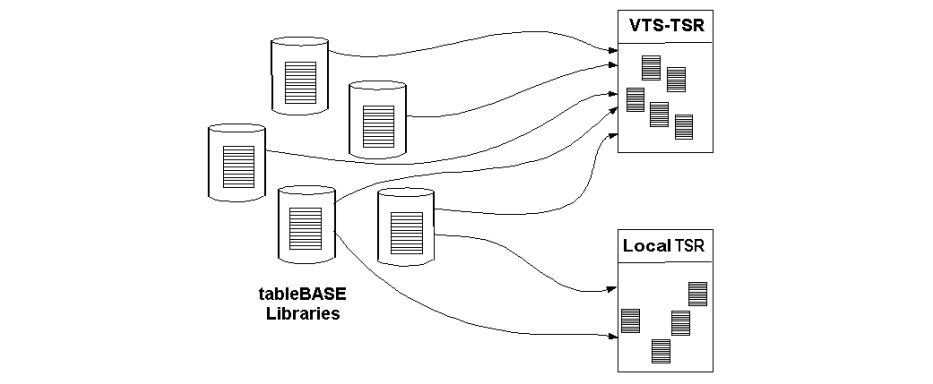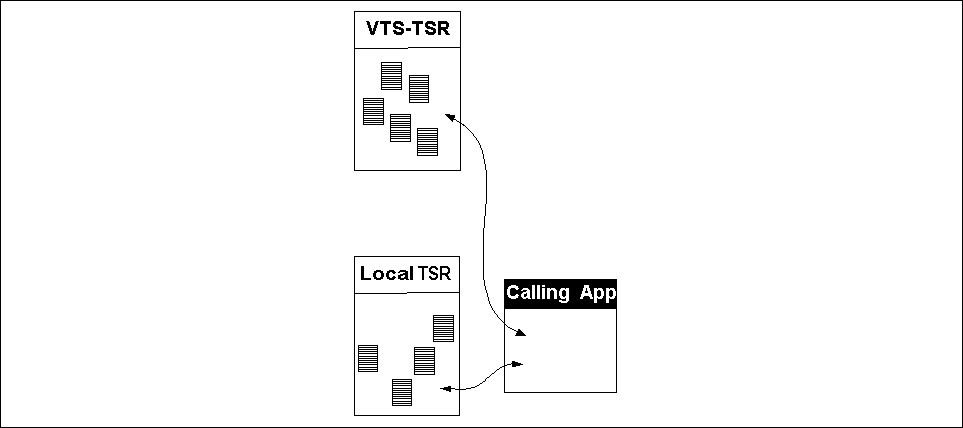The VTS product can dramatically improve performance during both initialization time and run time. This is accomplished using a shared TSR, known as a VTS-TSR. Consider now, the same scenario as before, but this time using a shared VTS-TSR in addition to the local TSR used before (see Figure 73).

This divides the burden between two TSRs, rather than housing all tables within a single TSR. Access to tables is more efficient if there are fewer tables in a given TSR.
At initialization time, the considerable amount of time, CPU and I/O activity required to load data from the tableBASE libraries into the local TSR can be reduced considerably. This translates into sharply lowered initialization times for the local TSR. The shared VTS-TSR is loaded with table data once and is left running—tables can be reloaded without taking down the entire TSR.
During run-time, space is freed-up in the local TSR (see Figure 74); it no longer has to serve as a data repository for those tables moved to the VTS-TSR. The VTS-TSR, which contains only table data, acts as a very efficient in-memory repository. The VTS-TSR outlives the applications that use it—and it can be started, initialized, populated with tables, and made available to the applications that use the data.
